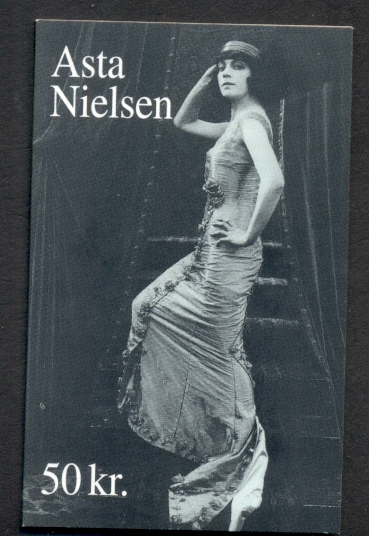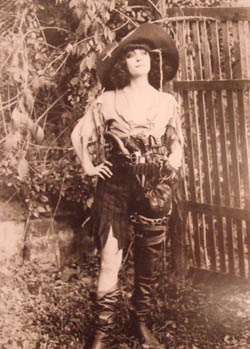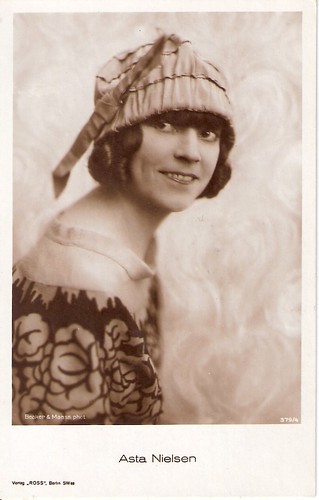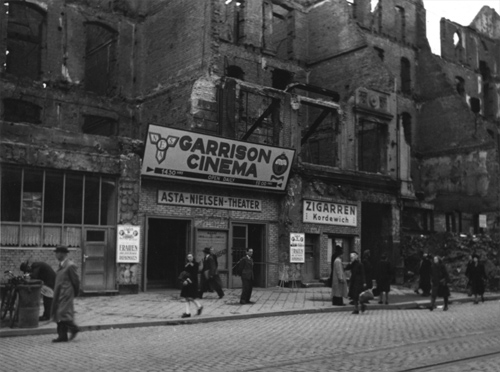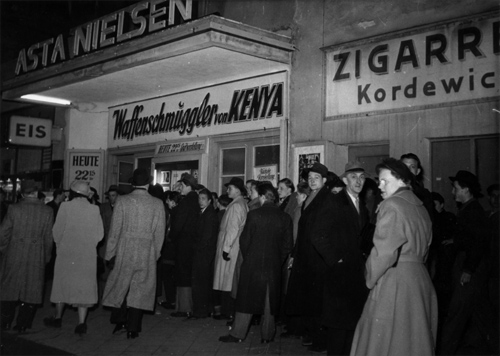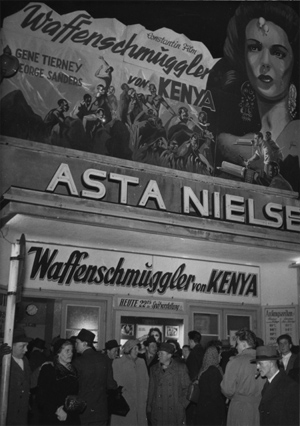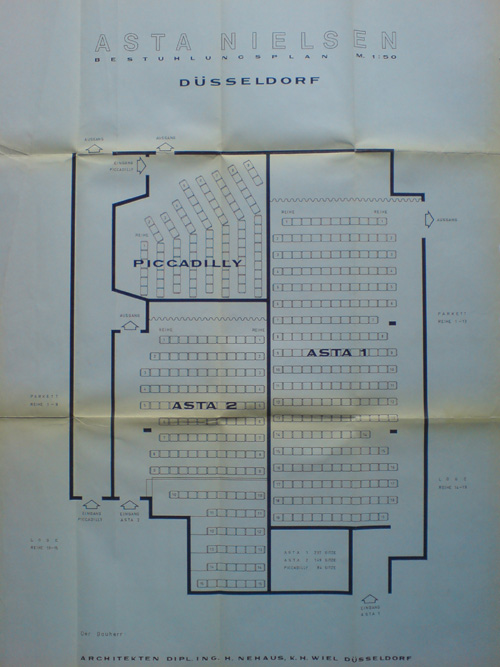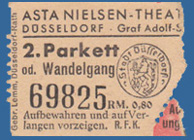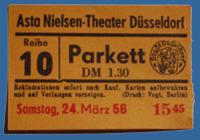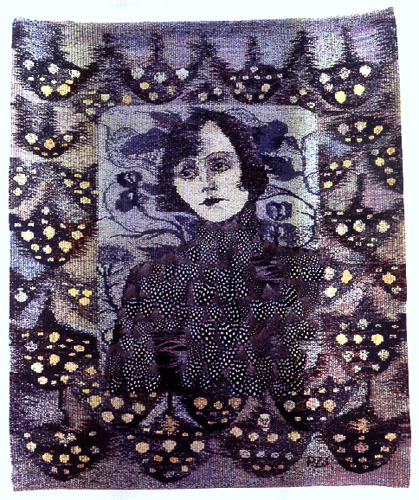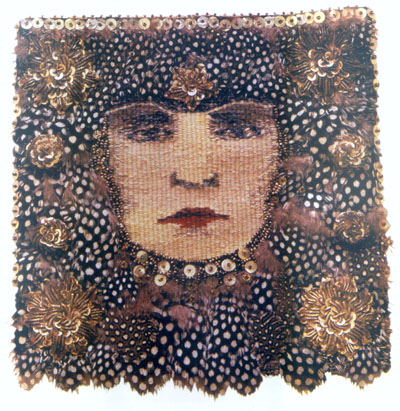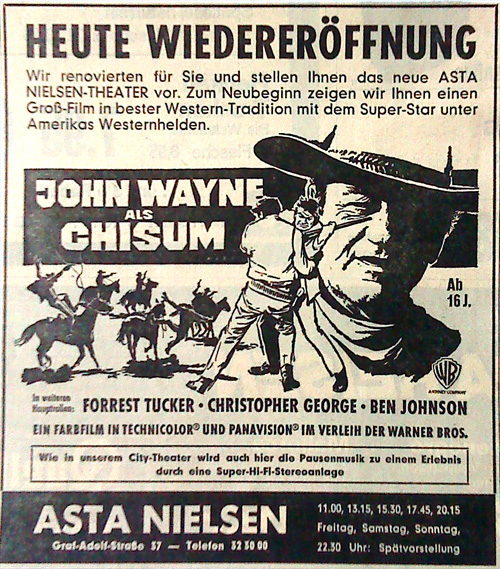Asta Nielsen (11 September 1881 - 24 May 1972), was a Danish silent film actress who was one of the most popular leading ladies of the 1910s and one of the first international movie stars. Seventy of Nielsen's 74 films were made in Germany where she was known simply as Die Asta (The Asta). Noted for her large dark eyes, mask-like face and boyish figure, Nielsen most often portrayed strong-willed passionate women trapped by tragic consequences. Due to the erotic nature of her performances, Nielsen's films were heavily censored in the United States and her work remained relatively obscure to American audiences. She is credited with transforming movie acting from overt theatricality to a more subtle naturalistic style. Nielsen founded her own film studio in Berlin during the 1920s, but returned to Denmark in 1937 after the rise of Nazism in Germany. A private figure in her later years, Nielsen became a collage artist and an author.
Early life
Asta Sofie Amalie Nielsen was born in the Vesterbro section of Copenhagen, Denmark, the daughter of an often unemployed blacksmith and a washerwoman. Nielsen's family moved several times during her childhood while her father sought employment. They lived for several years in Malmö, Sweden where her father worked in a corn millery and then a factory. After he lost those jobs, they returned to live in the Nørrebro section of Copenhagen. Nielsen's father died when she was fourteen years old. At the age of eighteen, Nielsen was accepted into the acting school of the Royal Danish Theatre. During her time there, she studied closely with the Royal Danish Actor, Peter Jerndorff. In 1901, twenty-year-old Nielsen became pregnant and gave birth to her daughter, Jesta. Nielsen never revealed the identity of the father, and chose to raise her child alone with the help of her mother and older sister.
Nielsen graduated from the Theater school in 1902. For the next three years she worked at the Dagmar Theatre, then toured in Norway and Sweden from 1905 to 1907 with De Otte and the Peter Fjelstrup companies. Returning to Denmark, she was employed at Det Ny Theater from 1907 to 1910. Although she worked steadily as a stage actress, her performances remained unremarkable. Danish historian Robert Neiiedam wrote that Nielsen's unique physical attraction, which was of great value on the screen, was limited on stage by her deep and uneven speaking voice.
Transition to film
In 1909, director Urban Gad encouraged her to become a silent screen actor and she starred in the 1910 film Afgrunden ("The Abyss"). The film was a success so she was encouraged to continue making silent films. Nielsen and Gad soon married and then moved to Germany because her talent was not understood by the Danish film industry.
In 1911 she was contracted to German producer Paul Davidson for $80,000 a year, then the highest salary for a film star. Indeed, she is called "the first international movie star", challenged only by French comic Max Linder, also famous throughout Europe and in America by that time. In a Russian popularity poll of 1911 she was voted world's top female movie star, behind Linder and ahead of her Danish compatriot Valdemar Psilander.
She remained popular on both sides through World War I and in 1915 (before the United States' entry into it) she visited New York City to study American film techniques, then pulling ahead of the rest of the world.
In 1924 she was famously co-starred with that other great Scandinavian diva, Greta Garbo, months before Garbo left for Hollywood and MGM. Nielsen continued as a legend of the screen in Germany. After the Nazis came to power she was offered her own studio by propaganda minister Josef Goebbels. Understanding the implications well, she instead fled the country home to Denmark.
She worked in film until talkies became popular, continuing acting only on stage. In 1936, she left Germany for good, settling in Denmark where she was unemployed for almost the rest of her life.
She is considered to be a great movie actress because of her talent of adapting her performing style in accordance with the demands of the film media avoiding theatrical manners. Besides, she was able to play women of extremely various social positions as well as of different psychology.
Assistance to Jews during World War II
During the Second World War she provided money for Allan O. Hagedorff, a young Dane living in Germany, to assist Jews. Using money provided by Nielsen, Hagedorff sent so many food parcels to the Theresienstadt concentration camp that he was warned by the Gestapo. Among others, Victor Klemperer, the diarist and philologist, was offered money by Hagedorff.
She was married three times. She died in 1972.




 Reply With Quote
Reply With Quote

 )... She was indeed multitalented.. too bad that her voice, was not good enough for talkies. After the war she published an autobiography called "Den tiende muse" (The tenth Muse), which is considered a great litterary work.. I collect biographies on Danish actresses, and this is one of my favourites. She also wrote several short stories, and again proved that she was a talented writer as well as actress. She ended up directing a portrait of her life, because she wasn´t happy with what the director had come up with. She was a determoined lady
)... She was indeed multitalented.. too bad that her voice, was not good enough for talkies. After the war she published an autobiography called "Den tiende muse" (The tenth Muse), which is considered a great litterary work.. I collect biographies on Danish actresses, and this is one of my favourites. She also wrote several short stories, and again proved that she was a talented writer as well as actress. She ended up directing a portrait of her life, because she wasn´t happy with what the director had come up with. She was a determoined lady


